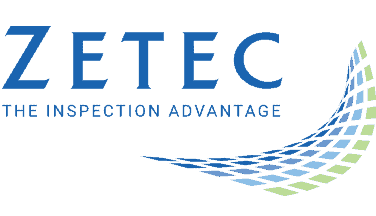NDT in Additive Manufacturing of Metals

“Uncontrolled variation is the enemy of quality.” That quote, coined by renowned quality management expert Dr. W. Edwards Deming, can apply to just about any process. When the actions to create a product are predictable, so is the result. That’s a significant part of manufacturing quality management—standardization.
However, it’s impossible to eliminate every variation, especially when dealing with a complex process like additive manufacturing. While the method is identical every single time, environmental factors like a change in temperature, humidity, material quality, or basic design can lead to errors that affect the efficacy of a part. NDT in additive manufacturing of metals can eliminate these issues
Uncontrolled Variation in Metallic Additive Manufacturing
Additive manufacturing is an innovation that’s transforming a multitude of industries. It’s capable of producing parts on-demand, making it ideal for Just-in-time manufacturing (JIT). It also provides lightweight pieces with more complex designs, establishing it as an excellent tool for prototyping. While it’s a far better method than most other production options on the market, it’s not perfect.
Metallic additive manufacturing works the same way as other 3D printing systems. A design is generated on a computer and then printed in layers using powdered or pelleted materials. This process creates a three-dimensional part that can be assembled into a prototype. However, when working with metal, several issues can occur that may damage the item’s functionality.
- Poor density: The whole reason a manufacturer chooses metal as their printing medium is that the piece requires significant mechanical function. However, if the material’s particle size, distribution, and shape are not considered in the process, ineffective density results. Then, there’s a chance that the part can crack under stress. Unfortunately, it can be challenging to tell if the material wall thickness is appropriate until the part actually breaks.
- High porosity: The most common source of excessive porosity in metallic 3D printing occurs when metal fails to reach a sufficient melting point during molding. Solid metal fragments mix with molten material and leave tiny gaps in the structure of the piece. In even the best processes, gas atomization can also lead to high porosity. Gas jets may warp molten metal droplets as they cool, leading to small, sometimes microscopic holes in a part. Excessive porosity weakens the piece and makes it prone to cracking.
- Residual temperature stress: The metallic additive manufacturing process is one of extreme temperatures. Metal has a high melting point, making extreme temperatures a necessity. Meanwhile, rapid cooling ensures the part maintains its shape. Residual stress from these changes may warp the part in ways that aren’t obvious. The issue won’t be evident until structural failure. Proper preparation of equipment and predictive modeling can help to eliminate these issues, but only if the manufacturer is aware of the problem in the first place.
- Post-processing damage: Metal parts rarely roll off the printer ready for use. They require some level of finishing. Machining, grinding, and polishing are all great options to ensure the part is production-ready—but they can also lead to damage. As much of this process is subjective and depends on the worker’s expertise, variation occurs that makes damage hard to predict.
These issues all have one common component: they are a result of process variation. Either material is inappropriate, handling is poor, or the program itself makes a mistake. When using a damaged part in the prototype, the function could suffer and require the manufacturer to start the process over—which can be costly. NDT in manufacturing can help to locate these hard to read errors and eliminate variations in the process.
Process Improvement with NDT in Additive Manufacturing of Metals
When Dr. Deming warned manufacturers of the dangers of variation, he specifically referenced “uncontrolled” process diversion. When someone is not aware there is a problem, they lose control of the process and a small, correctable error becomes a massive mechanical malfunction. As the average cost of product development starts at $30,000—and can go much higher with complex, metal prototypes—this failure becomes an expensive mistake.
Nondestructive testing can eliminate these uncontrolled circumstances by becoming part of the process. Ultrasonic NDT methods can locate small flaws in parts that indicate a major failing somewhere in the line. In this, an ultrasonic sound wave is pushed into a part using a probe. The probe includes receivers that “listen” for echoes that are indicative of a flaw. A particularly advanced ultrasonic testing system could tell the tester exactly what kind of flaw. Then, the specific incongruity type would narrow down the likely culprit of the issue.
For instance, if the ultrasonic reading showed a series of microscopic holes, the tester would likely know they’re dealing with high porosity from an insufficient supply source for their 3D printer, or a situation with gas atomization. The creator could then take remedial measures to eliminate the issue before the failure of the prototype, when it’s still affordable to correct.
NDT in additive manufacturing of metals helps to eliminate uncontrolled variation that causes part failure. The ability to locate flaws at an early stage streamlines the prototyping process and results in significant cost savings. A few extra moments of quality checking early on can eliminate months of remedial measures later.
Zetec supplies NDT in additive manufacturing of metals to mitigate issues caused by process variation. Connect with our team on our contact page to learn more about NDT in the manufacturing industry.
